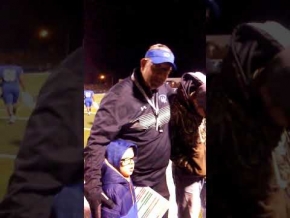Club shares secret quilt codes of the Underground Railroad


“Follow the North Star.” “Gather your tools.” “This is a safe house.” Such are the messages said to be concealed in the intricate quilt designs employed by the Underground Railroad. The members of The Pleasant Hill Quilt Club of Linden presented interpretations of ten distinctive quilt patterns at the Legacy Center in Hughes Springs on Feb. 17.
The quilt codes were initially revealed in 1994 by Mrs. Ozella McDaniel Williams to Jacqueline Tobin, a teacher of writing and women's studies at the University of Denver. In 2000, Tobin, in collaboration with Raymond Dobard, a professor of art history at Howard University, published Hidden in Plain View: A Secret Story of Quilts and the Underground Railroad. The Underground Railroad, which was neither underground, nor a railway, was a succession of homes, farms and businesses that were sympathetic to the abolitionist movement in the decades leading up to the Civil War. In these places, runaway slaves could count on food, clothing and shelter, as they made their way north to Canada and freedom. Perhaps best known for use of the Underground Railroad was Harriet Tubman, who – after escaping a brutal life as a slave herself – returned to the south over a dozen times to help lead hundreds of slaves to freedom. At one point, there was a $40,000 reward for her capture and return.
Mrs. Flo Stevenson, President of the Pleasant Hill Quilt Club, introduced the program, and the other members who were present: Vancie Gaines, LaJoyce Flanagan, Volena Allen, Alvis Dorsey, LaWanda Warren, Robbie Pruitt, Mary Shurn, Eunice Pruitt, Ether Blaylock, and Janell Jackson. Each member took a turn explaining one of the quilt patterns’ distinct messages to fugitive slaves. The codes informed slaves and their supporters of the next step in an escape plan. “Get ready to leave.” “Follow a jagged path to avoid capture.” The quilts were hung on clothes lines or draped outside windows. The meaning of each quilt was passed along orally within the slave community, Mrs. Stevenson said, as it was against the law for slaves to learn to read or write. Ironically, it is because of a lack of written documentation that the lore of the quilt codes is somewhat contentious. When Tobin and Dobard published their book, St. Louis quilt historian Cuesta Benberry reportedly said: “The oral testimony of [Ozella Williams] is going to generate a great deal of controversy because it is the custom of scholars to look askance at oral tradition, at anything that can't be proved by the written word.”
In addition to a large audience of locals and visitors, the eighth-grade class from Daingerfield made the short trip over for the 11:00 a.m. presentation. Asked what their impressions were, Montoya and Madison said they liked the way the codes were depicted in the quilts. Xavier and Jamie both enjoyed the singing of hymns and folk songs performed by the presenters that helped tell the story of the slaves’ courageous attempts to escape to freedom.
Fact or folklore, history or hearsay … one could not help but be stirred by the compelling presentation put on by the dedicated members of the Pleasant Hill Quilt Club.
- Log in to post comments








